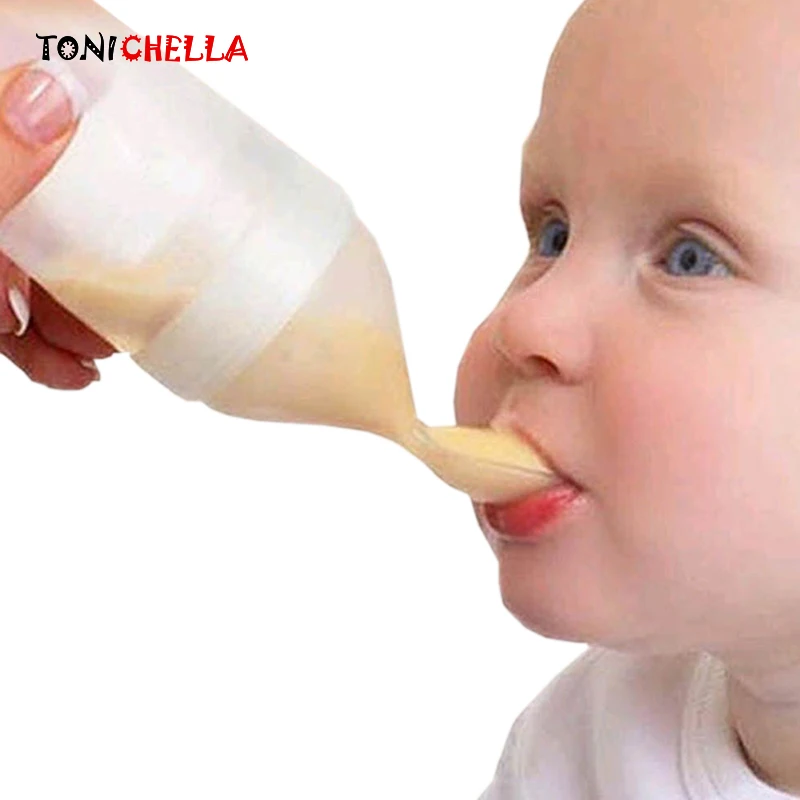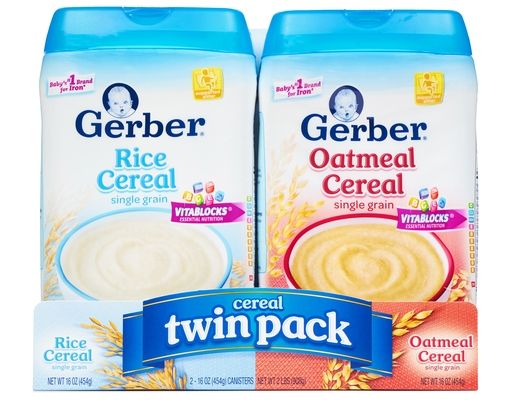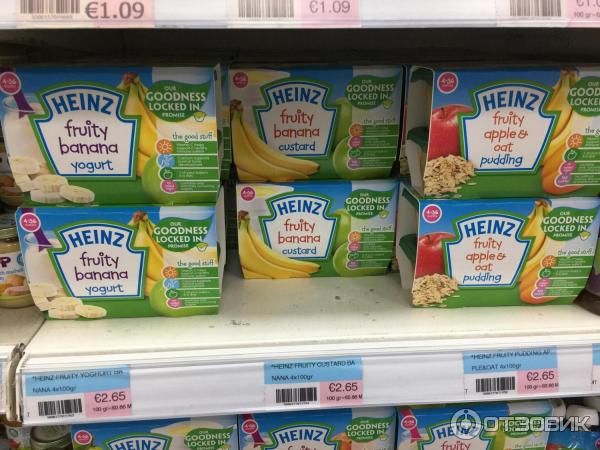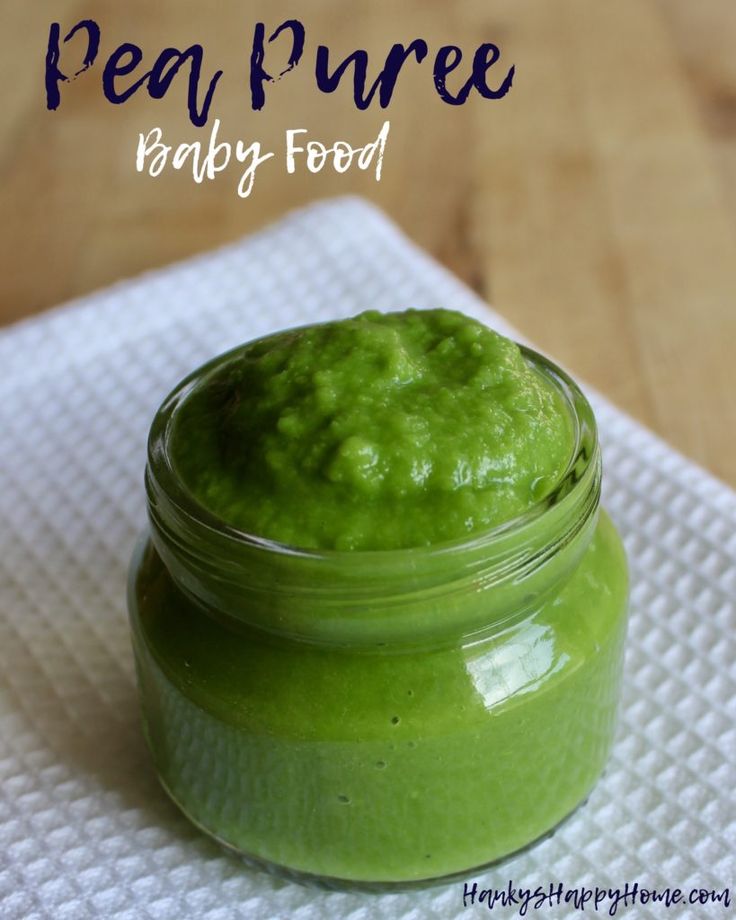Milk to feed baby rabbits
Caring for Newborn Baby Rabbits
IF THESE ARE WILD BABIES
It’s that time of year again. Wild babies everywhere. But are they at risk?
Wild rabbits hide their nests in plain view, often in the middle of your yard, bushes, etc. If you find a nest that has been disturbed, do the best you can to restore it and leave the babies in there. If a dog discovers the nest, do your best to restore it (with grass, leaves, whatever mama has used), make sure the kits are in there, and find a way to keep the dog(s) away from the nest. Mama will return for her babies and taking them away will seriously decrease their chance of survival. If you do not see the mama—DON’T WORRY—they only nurse their babies a few minutes a day, then they stay away so as to not draw predators to the nest.
If a kit is injured or an animal brings you an injured baby, if you have no choice but to help a baby, please do not try to care or it yourself—-get it to a rabbit vet or a wildlife rehabilitator
- Local wildlife rehabilitator: https://www.
nwrawildlife.org
- List of rabbit vets: http://rabbit.org/vet-listings/
The best thing you can do for wild babies is to leave them alone (restored to the nest) or, if injured, get them to a rabbit vet or wildlife rehabilitator.
DOMESTIC/PET RABBITS
WHERE TO PUT THE BABIES
Make the babies a soft nest area in a box with clean towels. We like to put one folded towel on the bottom and another bunched on top of that, so the babies can snuggle into it. You can also purchase soft nesting wool from a pet store and put that on top of the towel. You can also take whatever nesting material they were in and put it in the box as well. Cover the box almost entirely with a light towel, making sure that there will be enough air so the babies do not suffocate. Leaving about a one inch gap at the top is usually sufficient. Keep the babies in an out-of-the way, QUIET area, such as an adult’s bedroom. If the room temperature is between 68-72 degrees you will not need to provide extra heat, but if it’s cooler than that you will need to provide extra warmth. Use a heating pad set on low and slip it under one half only of the box. We do it this way so that the babies can move to a cooler area if it gets too warm. DO NOT put babies directly on heating pad, as babies can burn themselves very badly.
Use a heating pad set on low and slip it under one half only of the box. We do it this way so that the babies can move to a cooler area if it gets too warm. DO NOT put babies directly on heating pad, as babies can burn themselves very badly.
If the babies were with their mamma, but she is not caring for them (and you are sure she is ignoring them) you may need to separate her from them so they will not get hurt. Rabbit milk is very caloric and the kittens (baby rabbits) only nurse for a few minutes a day, so if you think that she is not caring for them based only on the fact you don’t see them feed…think again. If you do think they are being neglected, you can check: Are they cold? Are they making crying sounds for more than a few minutes before (or at) feeding time? Are they blue? Is the skin shriveled? Check for dehydration: gently pinch together the skin at the nape of the neck. If it sticks together or stays in a tent, they are dehydrated. A healthy kit has a round belly, is warm, gains weight on a daily basis, and snuggles with its litter mates. If they are dehydrated, cold, losing weight or becoming injured, of course, something must be done
A healthy kit has a round belly, is warm, gains weight on a daily basis, and snuggles with its litter mates. If they are dehydrated, cold, losing weight or becoming injured, of course, something must be done
WHAT TO FEED THE BABIES
Baby rabbits should be fed Kitten Milk Replacer (KMR) or goat milk, which you can buy at pet stores, or sometimes even a local veterinarian’s office. Because rabbit milk is the most caloric of all mammals, we add in one tablespoon of 100% heavy whipping cream (no sugar) to each can of KMR. Most kits will not nurse from the baby animal bottles you can buy at stores. Instead, use a sterile oral syringe, which can be purchased at most pharmacies. A better alternative are these nipples, which come the a syringe, but you may not be able to find them locally/right away (link).
It is best to feed baby rabbits no more than twice a day, but sometimes it takes more feedings to get an adequate amount into them, especially at first.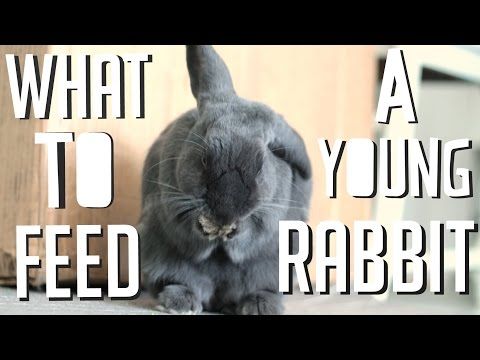
How much to feed varies greatly on what breed of rabbit you are feeding, and how big the kit is, but here is a basic guideline for the daily amount to feed a domestic rabbit who will be approximately 5-6 pounds as an adult (average rabbit size). You can increase the amounts as needed for larger breeds.
To help the kits maintain healthy gut bacteria, go to your local health food store (and get a bottle of ACIDOPHILUS. Ask for the capsules that have the “grainy stuff” inside (they are easier to mix than the “powdery stuff”) and add a bit to the formula at each feeding.
ALL amounts below should be divided into two feedings per day.
- Newborn – 1 week
- 4-5 cc formula
- 1-2 weeks
- 10-15 cc formula
- 2-3 weeks
- 15-30 cc formula
- 3-6 weeks, until weaned
- 30 cc formula
HOW DO I DO THIS?
Baby rabbits feed from their mothers while lying on their backs. You may loosely wrap baby in a soft face cloth or hand towel and lay it on your lap or in the crook of your arm. If bunny will NOT eat this way, of course, do the best you can. It is ABSOLUTELY CRUCIAL to let the baby eat at it’s own pace—especially if it is not suckling from the syringe willingly. If you squirt the liquid in too quickly you can aspirate (get liquid in) the lungs and the rabbit will suffocate.
You may loosely wrap baby in a soft face cloth or hand towel and lay it on your lap or in the crook of your arm. If bunny will NOT eat this way, of course, do the best you can. It is ABSOLUTELY CRUCIAL to let the baby eat at it’s own pace—especially if it is not suckling from the syringe willingly. If you squirt the liquid in too quickly you can aspirate (get liquid in) the lungs and the rabbit will suffocate.
Until their eyes open (10 days): After each feeding it is important to make the bunny defecate and urinate to keep the intestinal tract and urinary system running smoothly. Use a soft cloth or a cotton ball moistened with warm water and gently stroke the genital area until the bunny starts producing stool and urine. Keep stroking until the bunny stops. You are replicating the behavior of the mother rabbit who would lick her young to stimulate them to go to the bathroom. The stool will be soft and may be varying shades of green and yellow.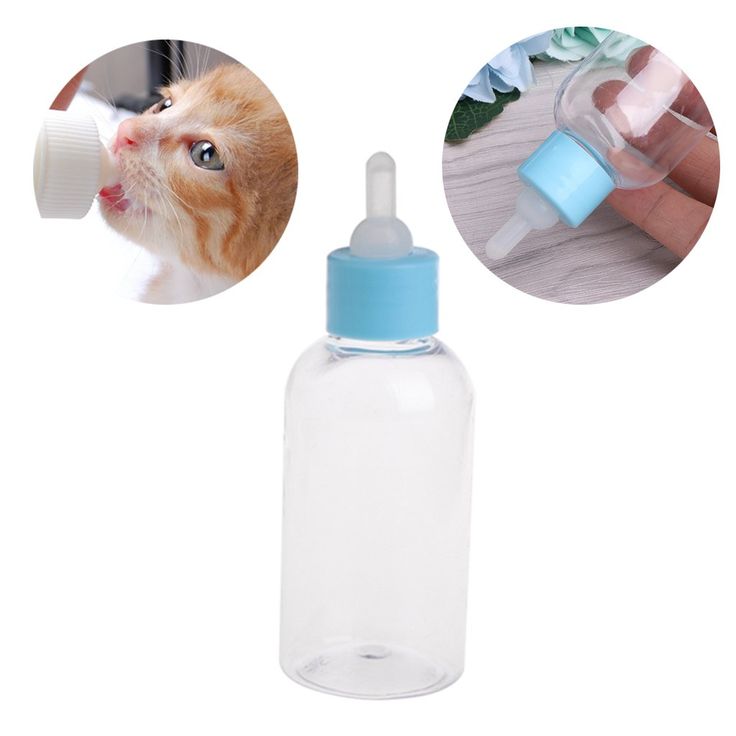 If the urine is brown and gritty, the buns are not adequately hydrated and you need to get them to a rabbit vet ASAP—-it is an emergency. Be sure to clean baby’s mouth with a damp cloth or paper towel, so that no milk dries in the hair.
If the urine is brown and gritty, the buns are not adequately hydrated and you need to get them to a rabbit vet ASAP—-it is an emergency. Be sure to clean baby’s mouth with a damp cloth or paper towel, so that no milk dries in the hair.
Baby rabbit eyes open at about 10 days of age. You may start introducing them to hay and pellets at this point, but no veggies or fruits yet. Just leave some timothy or orchard and alfalfa hay and pellets in a corner of the box where the babies can easily get to them. Make sure it the pellets are plain, high fiber and fresh, with no added goodies such as dried banana chips or seeds. Don’t ever leave a deep water dish in which a baby could drown; instead, use something shallow and rinse and fill it frequently.
If you have any questions, please contact us.
11 Things You Can Feed A Baby Rabbit Without A Mother – BunnyAsAPet
Caring for an orphaned baby bunny isn’t an easy task.
They have such a small and delicate stomach.
So things might easily go wrong with one improper feeding.
But hey, relax.
This might require enough knowledge and be challenging at first.
However, hand-raising a bunny isn’t impossible.
So how can you do this and what are the things you can feed to them?
Read on to discover:
- The nutrients and benefits of a rabbit’s milk.
- 11 things you can safely feed to an orphaned baby bunny.
- Whether a baby rabbit can survive without any milk or not.
- The answers to, “Can baby bunnies drink water?” and “How long can baby rabbits go without nursing?”
- And many more…
Table of contents
- What to feed baby rabbits without a mother?
- Can a baby rabbit survive without milk?
- 11 things you can feed a baby rabbit without a mother
- #1: Colostrum
- #2: Rabbit milk replacer (RMR)
- #3: Kitten milk replacer (KMR)
- #4: Goat milk
- #5: Formula with heavy cream
- #6: Alfalfa pellets
- #7: Alfalfa hay
- #8: Diluted formula
- #9: Leafy greens
- #10: Other rabbit-safe veggies
- #11: Cecotropes
- People also ask:
- How long can baby rabbits go without nursing?
- Can baby bunnies drink water?
What to feed baby rabbits without a mother?
You can feed baby rabbits without a mother with a milk replacer.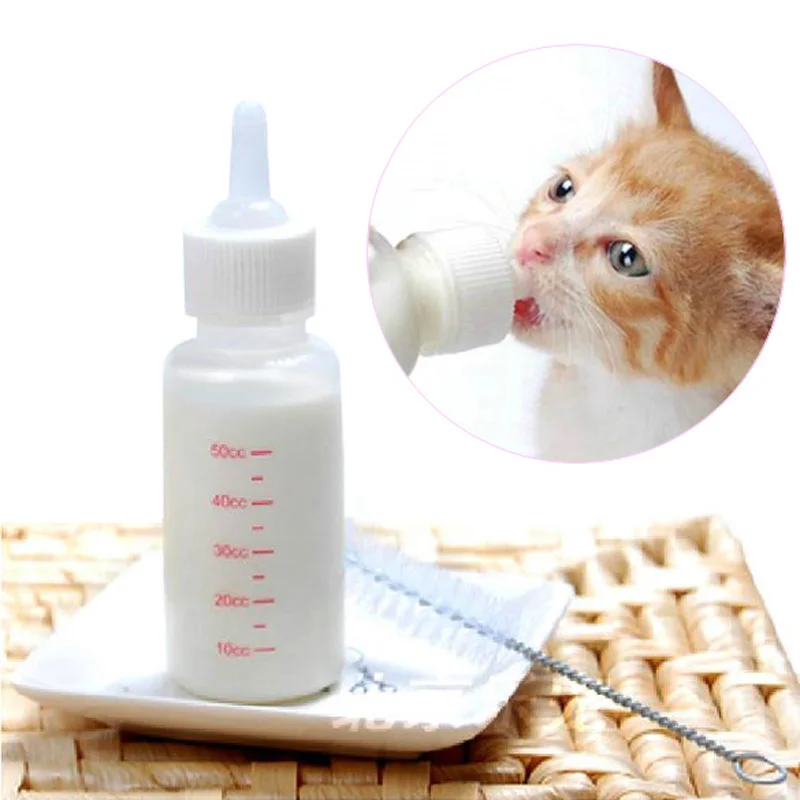 But since they need more nutrients and fats, this must be mixed with goat milk. As well as heavy cream and colostrum. Then as they grow older, start offering them cecotropes and solid food. Like pellets, alfalfa hay, and leafy greens.
But since they need more nutrients and fats, this must be mixed with goat milk. As well as heavy cream and colostrum. Then as they grow older, start offering them cecotropes and solid food. Like pellets, alfalfa hay, and leafy greens.
Can a baby rabbit survive without milk?
A baby rabbit won’t survive without milk. At age 0 to 3 weeks old, it’ll be the sole part of their diet. So it’s their only way to get the nutrients and energy they need to live longer. And even though they’re already eating solid food at 6 to 8 weeks old, they still need milk for more nourishment.
In a study, the most common cause of death in baby rabbits is abandonment.
It had a 31 to 31.3% rate, followed by cannibalism (17.6% to 18%) and starvation (11.7% to 12.%).
I know you want to prevent this and save your young bunny. So let’s dive right in!
11 things you can feed a baby rabbit without a mother
#1: Colostrum
First off, did the baby rabbit’s mother die after delivery?
If this is the case, your kitten didn’t get any milk from their mom. This is why they need a special substance called colostrum.
This is why they need a special substance called colostrum.
“What is that?”
It’s a fluid that’s produced by mammals before they even release breast milk.
“Why is colostrum important?”
Aside from nutrients, it also contains antibodies that help newborns fight infections.
So Dr. Dana Krempels says that baby rabbits who had this have a higher survival rate than those who didn’t get any.
What to do?
You can buy this at health food shops near you.
But, you may also get this from your vet instead. Then ask them how long should this be given to your rabbit.
This comes in either powdered or capsule form. And it’ll be mixed into the milk formula. (I’ll discuss the recipe shortly so stay tuned!)
Reading tip: How To Take Care Of Baby Rabbits? 11 Vital Tips
#2: Rabbit milk replacer (RMR)
Baby bunnies need milk to survive. And their mom’s, in particular, is said to be high in nutrients and calories.
“Really?”
Yup! A study found that rabbit’s milk has 4 times more protein than goat’s and cow’s.
Plus, it’s also greater than them by 4.5 to 5 times in terms of arginine. It’s an amino acid that helps build protein.
But if you have an orphaned bunny, how can you provide this essential need of theirs?
First, you can look for a nursing female rabbit.
But if it isn’t doable, another way is to get a suitable milk replacer.
“What is it?”
As its name implies, it’s a substitute for a mother’s milk. It’s packed with nutrients and easily digested by babies.
There are many varieties of this in the market.
But, let me talk about the ‘rabbit milk replacer’ first, a.k.a. RMR.
A group of researchers in Thailand conducted a study about this.
And their goal was to find the differences among the 3 milk replacers for bunnies, which are as follows:
- Kitten milk replacer (KMR).
- Rabbit milk replacer (RMR)
- Mammal milk replacer (MMR).
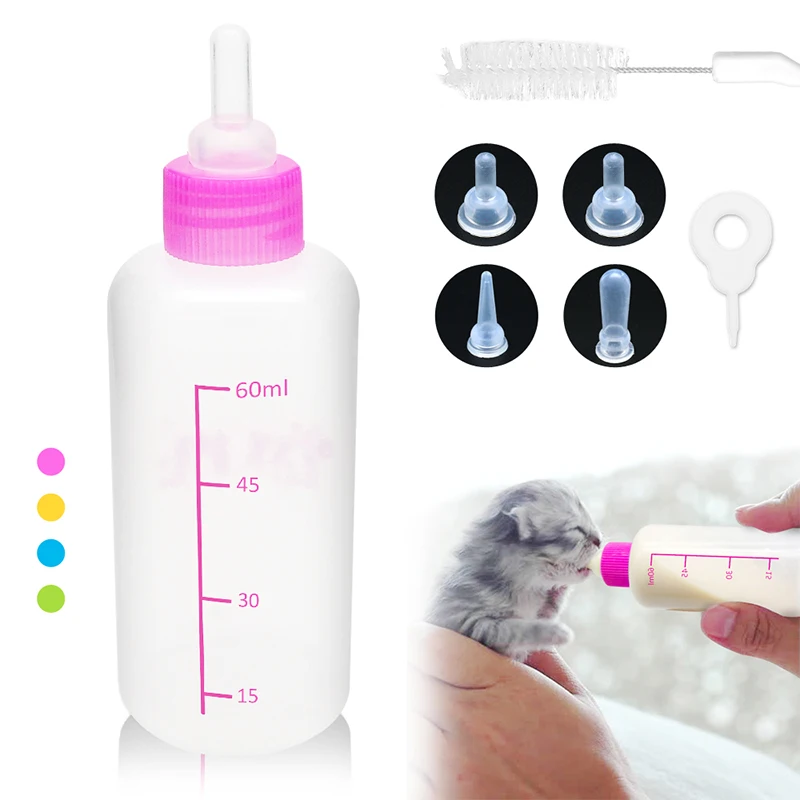
“What are the results?”
After feeding the 36 baby bunnies for 20 days, they found that RMR didn’t cause any side effects. So it’s considered safe for rabbits.
But, it was lower than KMR and MMR with regards to nutrient digestibility. Although the difference isn’t that significant.
“Where can I get this?”
The researchers made their own RMR formula for the study. And it’s quite complicated to follow.
So here’s a rabbit milk replacer I found on the Internet.
But wait, before giving this to your bunny, it’s best to consult a vet first for their safety.
Note: Again, baby rabbits below 3 weeks old should only have milk in their diet. And to know whether your kitten is at this age, check their eyes. They must be closed if they’re less 2 weeks.
#3: Kitten milk replacer (KMR)
Rabbit milk replacers aren’t always available in some places.
This is why the most commonly used is a kitten milk replacer or KMR. Since you can easily buy this online or in the market.
Since you can easily buy this online or in the market.
Based on the study I mentioned above, rabbits fed with this absorbed more nutrients than those who received RMR.
KMR is also higher in crude protein content. But, it’s low in fats compared to rabbit’s milk.
So to compensate for this, experts advise adding other ingredients into the formula. And I’ll discuss this shortly.
#4: Goat milk
Aside from the ones I listed earlier, this could also be a substitute for rabbit’s milk. Although it’s usually mixed with other products to be more effective.
It may have a lower protein content than RMR, but it’s higher in fats. So Dr. Krempels also recommend this to be included in the formula – along with KMR.
“What are the other benefits of goat milk?”
Experts say that it’s more nutritious than cow milk. Plus, it’s easier in the tummy and has lower risks of allergies.
#5: Formula with heavy cream
Again, baby bunnies must be fed milk to survive.
But for their survival rate to be higher, it must be as close as possible to a rabbit’s milk.
Most especially in terms of nutrients and fats. Since babies need these in their diet to grow and develop well.
Kitten milk replacers are nutritious. But, they’re low in energy and fats.
So to make up for this, experts suggest adding some heavy cream. But take note that it must not have any sweeteners in it.
What to do?
Follow this sample formula recipe for baby rabbits made by Dr. Krempels:
- 1/2 cup – fresh goat milk.
- 0.20 tbsp (3 ml) – heavy cream.
- 1/2 cup – kitten milk replacer (KMR).
- 1 to 1 ½ tbsp (10 capsules-worth of content) – freeze dried colostrum.
Mix all of these in a container with a lid. Then shake well until the colostrum is thoroughly dissolved.
But before giving the formula to your baby rabbit, it must be warm first.
So you may heat the formula to 105o F (40.56o C).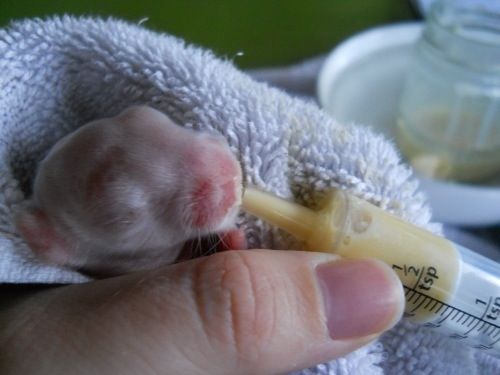 Or submerge the container in a hot water.
Or submerge the container in a hot water.
Fill your small oral syringe/dropper. Then drop some on your wrist to check if it’s cool enough to be eaten by your bunny.
“How much formula should I feed to my baby rabbit?”
This usually depends on their age.
- For 0 to 1 week old: 2 ½ ml every feeding.
- For 1 to 2 weeks old: 5 to 7 ml every feeding.
- For 2 to 3 weeks old: 7 to 13 ml every feeding.
- For 3 to 6 weeks old: 13 to 15 ml every feeding.
But some adjustments can also be made based on their size. Say, if the baby is quite small, they may need a lesser dosage.
“When and how often should I feed them?”
Feeding must ONLY be done twice a day. Preferably at dusk and dawn since these are the times mother rabbits nurse.
Do this to avoid overfeeding as it can lead to bloating and death.
To know the proper way to feed a baby rabbit, check out this video:
Some reminders
- Feed them in an upright position. You may also wrap the baby in a soft cloth while you’re handling them.
- Do this in a safe place. Baby rabbits are wiggly and they’re prone to falls. So hold them securely (but not too tight). And ensure there’s a counter with a soft towel underneath.
- Make them drink slowly. Squeeze the syringe gently and feed them drop by drop. See if the baby already swallowed the previous one before you squeeze again. Drinking quickly can make the liquid go into their lungs. And this may lead to suffocation.
Note: Make sure to wash your hands first before you pick up the baby. Why? Experts say that there are 2 to 10 million germs on our elbows and fingertips. These can be transferred to the kitten. And it may cause serious illnesses as their immune system is still developing.
These can be transferred to the kitten. And it may cause serious illnesses as their immune system is still developing.
#6: Alfalfa pellets
When a baby bunny is around 3 to 4 weeks old, they should start nibbling pellets as per House Rabbit Society.
At this age, they’ll drink less milk and show more interest towards solid food. So offering them a few pellets can help them have a smooth transition.
“But what kind of pellets are best for baby rabbits?”
In this case, plain alfalfa-based pellets are your best choice.
Why?
It’s rich in calcium and protein. So these are vital for your baby bunny’s bones and muscles.
Baby rabbits grow pretty fast. In fact, they can live outside their nest as early as 3 weeks old.
So they need more nutrients to grow and develop well.
Note: Although baby bunnies start eating solid food at 3 weeks old, they still need milk until 6 to 8 weeks old. To give you a clearer idea, here’s their diet plan as they grow older:
- 3 to 4 weeks old: Milk, some alfalfa and pellets.
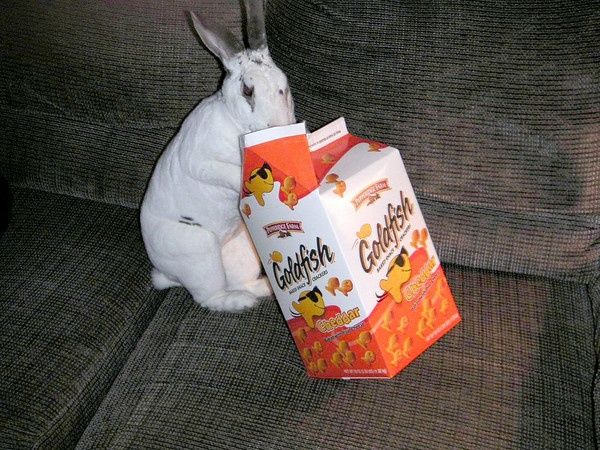
- 4 to 7 weeks old: Milk, more access to alfalfa and pellets.
- 7 weeks to 7 months old: Unlimited access to pellets and hay.
#7: Alfalfa hay
Besides pellets, baby rabbits aged 3 to 4 weeks old also need to eat some hay.
It’ll give them the nutrients they need. Plus, a bunny’s teeth will start growing at this period (around 19 to 21 days old to be exact).
So they need something to chew on to wear down their continuously-growing teeth. As well as to keep them healthy.
Alfalfa hay vs Timothy hay
Timothy hay is considered to be more suitable for grown-up rabbits.
While alfalfa hay is the better option for young bunnies.
“Why’s that?”
This is because alfalfa has higher calcium and protein content. Plus, it also aids in good digestion.
#8: Diluted formula
Does your baby rabbit still ask for milk at age 6 or 8 weeks old?
At this phase, bunnies are usually weaned completely.
But if this is not the case with your rabbit, give them a diluted formula to have a smoother transition to solid food.
“What should I do?”
A baby bunny’s tummy is quite sensitive. So start with this ratio: 75% formula and 25% clean drinking water.
Then as you progress, reduce the amount of milk. And do this until they fully lose interest in it.
#9: Leafy greens
Once your baby bunny is already 12 weeks old, you can start feeding them veggies.
But wait, only offer these to them one at a time. And they must be in small amounts to not upset their stomach.
“How much leafy greens should I give to my baby rabbit?”
To be safe, begin by offering them tiny pieces (2 in or 5 cm).
Then increase the amount gradually (up to 1 cup a day if they’re 5 lb or 2.27 kg).
But while doing this, watch them closely and look for signs of diarrhea:
- Shaking.
- Weight loss.
- Low energy.
- Sunken belly.

- Reduced appetite.
- Hunched posture.
What leafy greens are safe for rabbits?
According to VCA Hospitals, these are the best options:
- Basil.
- Cilantro.
- Kohlrabi.
- Bok choy.
- Carrot tops.
- Watercress.
- Beet green.
- Broccoli greens.
- Mustard greens.
- Romaine lettuce.
While certain leafy greens must not be fed frequently, like:
- Kale.
- Parsley.
- Escarole.
- Swiss chard.
- Collard and dandelion greens.
“But why?”
These vegetables have high calcium content. And an excess of this may lead to the formation of bladder stones.
Their milk formula already gives rabbits enough to support their bone development. So it’s best to avoid more calcium-rich items in their diet.
#10: Other rabbit-safe veggies
Apart from the dark leafy ones, young bunnies can also eat other types of veggies, such as:
- Squash.
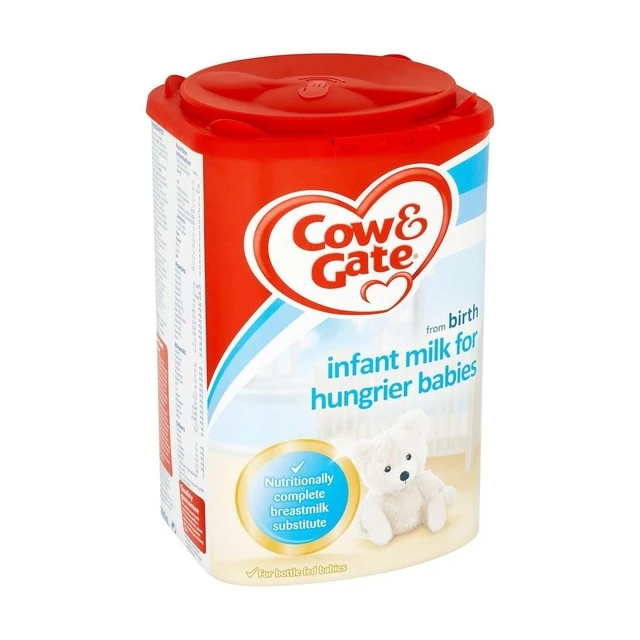
- Broccoli.
- Wheat grass.
- Brussel sprouts.
But make sure to remove any seeds and hard parts before serving these. And slice them into small pieces for easier and safer digestion.
Note: We often see rabbits eating carrots in cartoons like Bugs Bunny. But did you know that these should be fed in limited quantities? Yep, this is because carrots are packed with carbs. And high amounts of these can upset a bunny’s stomach.
#11: Cecotropes
Last but not least, baby rabbits also need to eat some poop to have a healthy tummy.
“Wait. What do you mean?”
You may have noticed this already. But it’s normal for bunnies to eat their poop.
They produce 2 kinds of droppings. And the softer stools with a sticky appearance are the ones they’ll consume.
“But why?”
Rabbits are ‘hind-gut fermenters.’
They have a different digestive system than ours. And this is because their diet is high in fiber.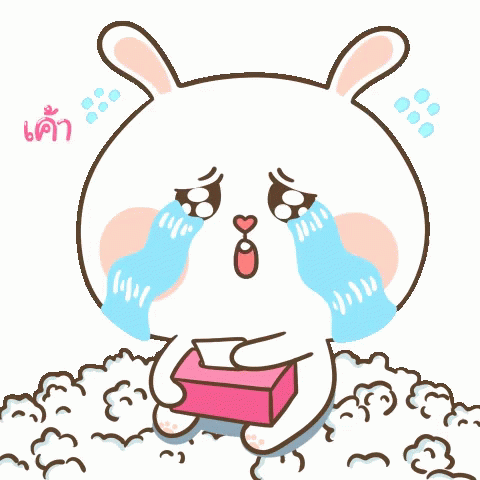
Grasses and weeds aren’t easy to digest. So to absorb all the nutrients, they have to re-ingest what they took in.
To do this, their bodies will release these partially-digested droppings, a.k.a. cecotropes. Then they’ll eat these to get the nutrients they need.
Now, going back to the topic.
A baby bunny’s stomach pH level is higher than an adult’s.
Plus, it doesn’t have any living microorganisms in it.
So when they turn 10 days old, babies will usually eat their mother’s cecotropes. Since they can’t produce some of their own yet.
They do this to get essential nutrients (e.g., protein, fiber, vitamins B and K). As well as important hindgut microorganisms.
And these will help their tummies to digest well as they transition to solid food.
What to do?
You can start introducing these to them at age 2.5 to 3 weeks old. But experts say that this is also vital for bunnies below 1 week of age.
If you don’t have an adult rabbit at home, you may look for a healthy cecotrope donor.
Collect some of their droppings. Then give 1 cecotrope daily to the baby rabbit for 4 to 5 days.
Note: Some young bunnies may refuse to eat cecotropes. If yours is like this, mix them in their formula instead. Keep doing this for around 3 to 4 days until they’re fine with it.
Learn more: Rabbit Poop Chart: 13 Different Types Of Bunny Poop
People also ask:
How long can baby rabbits go without nursing?
Baby rabbits can go without nursing for up to 3 to 4 days. But since they don’t get any food, they’ll get weaker as days pass by. And this could lead to a slow death.
Typically, mother rabbits nurse their babies once a day. And they’ll do this within 5 minutes too.
Why?
Because rabbit’s milk is high in calories. So ingesting it once is enough for babies to get through the day.
However, the absence of it for several days will cause serious problems for the kittens.
This is why they must be hand-fed if they don’t get enough milk every day.
Note: It might be different for wild baby bunnies. This is because they have more sensitive stomachs. So if you see one, don’t feed them. Instead, put them in a box with towels to keep them warm. Then contact the nearest wildlife rehabilitator in your area.
Can baby bunnies drink water?
Baby bunnies can drink water when they’re between 3 to 4 weeks old. This is because, at this age, they’ll start to be introduced to other food aside from milk.
So if your rabbit is already in this phase, you can give them access to water. But since they’re still small, provide a shallow dish for them.
Note: Do you have a messy drinker? If so, try bottle feeding instead. This will prevent them from getting drenched in water. Try giving them a dish after a few weeks. And see if they don’t make a mess.
milk substitutes, supplements, newborn care
Sometimes it happens that young rabbits, barely born, are left without mother's milk and care. Then these worries fall on the shoulders of a person. Feeding rabbits without a rabbit is a serious and responsible matter, because the life of babies depends on the speed of decision-making and subsequent actions.
Then these worries fall on the shoulders of a person. Feeding rabbits without a rabbit is a serious and responsible matter, because the life of babies depends on the speed of decision-making and subsequent actions.
Why are baby rabbits left without mother's milk and care? What is the danger?
The farmer decides to artificially feed for one of the following reasons:
- as soon as she has calved, the female refuses the young rabbits and abandons them;
- the female rabbit has no milk or has developed mastitis;
- the female is in a very serious condition after birth or she has died;
- other nurse does not accept babies.
It is especially dangerous for young rabbits when the female dies without having time to feed them with valuable colostrum for the first time. It contains antibodies necessary for babies, which contribute to the development of their own immunity.
Human care and care will not replace mother's cubs, and incorrect actions on the part of breeders increase the mortality rate.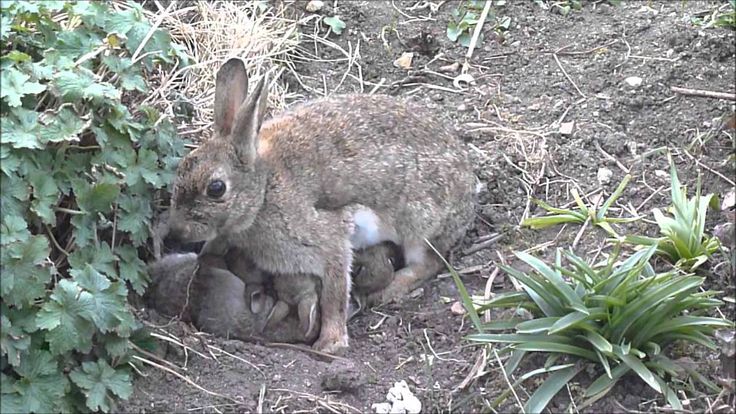
Ornamental rabbits are less likely to survive, and meat breeds, even when bottle-fed, grow up to be healthy, strong individuals.
What to try before artificial feeding?
The purpose of artificial feeding is not only to ensure the satiety of rabbits, but to provide comprehensive care for offspring. Please try the following alternatives before you begin your duties:
- Find a wet nurse. This course of events is possible if the breeder has several queens. You can’t just plant baby rabbits with another lactating female. There is practically no chance that she will accept someone else's offspring.
Therefore, remove the rabbit for half an hour in another cage, and wipe the babies with fluff and straw from her dwelling. The nurse will return to the cage and will probably take on new wards. - Awaken the parental instinct. Most often, it is after the first birth that a mother does not want to feed her babies.
 Try to solve this problem by simply holding the rabbit during several feedings. nine0012
Try to solve this problem by simply holding the rabbit during several feedings. nine0012
With a favorable outcome, feeding on mother's milk, the rabbits will quickly get stronger and begin to gain weight. But it happens that these tips do not help.
How to properly feed baby rabbits for the first 30 days?
Baby rabbits are born completely blind, without wool. The first fluff on the body begins to grow on the 6th day, and the opening of the eyes occurs on the 10th day. Newborns weigh 60-90 g, but with comprehensive care and good nutrition, they quickly gain weight and grow.
The farmer should prepare for artificial feeding of the offspring - master the skills of care and purchase equipment.
Tools
Baby rabbits require teats and containers.
Buy Animal Feeding Kit from the shop. It includes a special syringe with rubber nozzles of various shapes and sizes. Such a set is sold in the form of a bottle with several special nipples.
You can get by with improvised means:
- Use the syringe and the pipette rubber cap to feed, poke a few small holes in it.
- eye drop bottle is suitable for the procedure. For convenience, use it together with a pipette tip.
- Small baby bottle is useful for older animals.
The process of artificial feeding should be as close as possible to natural. nine0003
Before opening their eyes, the reaction of rabbits to teat substitutes is weak. When pouring milk into the mouth, be careful and do not rush, otherwise the rabbit may choke or choke.
Milk replacers
Newborn baby rabbits require good quality nutrition. Rabbit milk substitutes include:
- Goat milk. The best option for artificial feeding of rabbits. There is no need to dilute or add anything, because the composition is similar to rabbit milk, only slightly inferior to it in fat content.
 nine0012
nine0012 - Cow's milk. The most affordable and common alternative to rabbit milk. In its pure form, it cannot be fed to babies, because it lacks carbohydrates in its composition. Mix cow's milk with condensed milk in a ratio of 3:1. Heat the mixture for 40-60 minutes. at a temperature of 70. Before feeding, cool to 37 degrees.
- Special blends. Sold in pet stores and veterinary pharmacies in a large assortment. Buy milk substitutes designed for rabbits or dogs. In a pinch, suitable food for cats. In terms of components, their composition is as similar as possible to rabbit milk. nine0012
- Infant formula . Such food is suitable for rabbits if it contains a minimum of sugar and additives.
In the presented video you can see the principle of artificial feeding of rabbits:
Thus, the most suitable food for newborn rabbits is special dry mixes, and cow's milk is the least preferred option.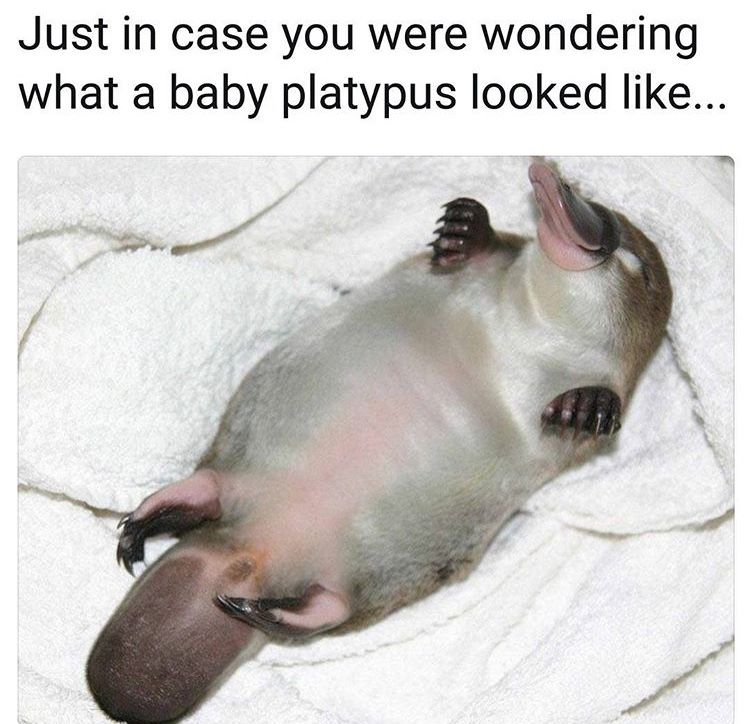
Feeding procedure
During the procedure, hold the animals upright, firmly, but without crushing. At first, rabbits may not respond to simulated nipples. Be patient. nine0003
Gently moisten your baby's mouth with milk, he will lick it off himself. Repeat several times. This will stimulate the sucking reflex.
During the feeding procedure, be careful not to get liquid into the animal's respiratory tract. This is fraught with the death of the rabbit.
Make sure that the tummy does not overflow, because babies themselves can not yet determine the level of their satiety. Overeating causes indigestion and related problems.
Feeding liquid should be 37 degrees. Store milk for up to 3 days in the refrigerator, and always use freshly prepared formula for feeding.
Adjust the diet according to the needs of the cubs. Well-fed babies sleep quietly, and hungry babies squeak and actively look for a source of food.
Dosage and frequency
The amount of mixture and the frequency of feeding are directly dependent on the age of the rabbits.
The female feeds the young rabbits 1-3 times a day. Her milk is very nutritious, so many feeding sessions are enough for rabbits for proper development, growth and weight gain. nine0003
But no mixture can replace rabbit milk, so bottle-fed babies are fed up to 6 times a day.
In the first 2 days, the rabbits need a few drops of food per dose, even 1 ml of the mixture is too much for them.
Gradually, the amount of milk needed for the development of the cubs increases, and the number of feedings decreases.
Artificial feeding by age
Organizing artificial feeding is a responsible business. You need to be extremely careful when choosing a diet for rabbits, depending on their age and physical health. After all, errors in the quantity and quality of the diet adversely affect the cubs. nine0003
From birth to 5 days
A newborn baby rabbit needs 1 drop of nutrient fluid. For the first day they feed 5-6 times. Since babies have not yet learned to swallow on their own, care must be taken.
Since babies have not yet learned to swallow on their own, care must be taken.
On the second day, 4-5 meals are enough. On the 5th day - 4 feedings. The daily norm of milk is 5-6 ml. By the end of this period, rabbits with normal development double their weight.
From 6 to 14 days
Animals grow up and the amount of nutrient mixture per feeding increases. They drink 7-10 ml of milk per day. The number of feedings remains the same, or decreases to 3. The weight of the rabbits reaches 250 g.
From the 15th to the 30th day
From the 15th day the animals are transferred to two meals a day. In the first 2-3 days, observe the behavior of the young and, if signs of hunger are present, supplement them with a small amount of formula in the 3rd feeding.
The amount of the mixture per day by the end of the month reaches 60 ml. While this is their main food. Weaning from the nipple should be on the 20-25th day.
The readiness for the introduction of complementary foods is determined by the condition of the teeth.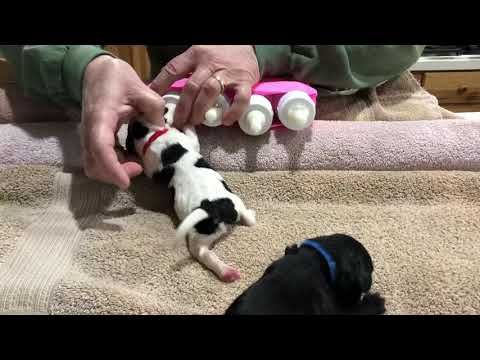 If the molars have replaced the milk teeth, then solid food can be gradually introduced and taught to drink from a saucer. nine0003
If the molars have replaced the milk teeth, then solid food can be gradually introduced and taught to drink from a saucer. nine0003
Weight of animals by the end of the period reaches approximately 500 g.
Starting from the third week, put small piles of dry grass in the cage - this will prepare the rabbits for solid food.
At this time, it is important to monitor the change in the baby's stool. Remove hay from the diet immediately if diarrhea occurs. If adaptation to new food goes without problems, then add a small amount of compound feed, grass, carrots.
From the 31st day, if there is no shortage in weight, milk is gradually removed from the diet of rabbits. When the offspring are 45 days old, their diet completely switches to an adult. nine0003
Vitamin A and Vitamin D
In nature, baby rabbits get their vitamins and minerals from their mother's milk and then from a varied adult diet. Artificially fed individuals need more vitamin supplements.
Artificially fed individuals need more vitamin supplements.
If the body lacks vitamin A , then rabbits suffer from a runny nose and dry eyes. This vitamin is responsible for the desire to reproduce and have healthy offspring, as well as the healthy functioning of the nervous system. Its sources are: beet tops, carrots, cabbage leaves, young grass, etc.
Vitamin D is responsible for bone formation. With its lack, growth retardation and various deformities of the limbs and spine are possible. Vitamin D is produced by the body itself under the influence of sunlight. This will help bone meal, fish oil, milk. Feed food in places where the sun's rays do not have access, because under their influence vitamin D is destroyed.
Oatmeal and oat sprouts
Oats are a fundamental cereal in rabbit nutrition, containing a storehouse of vitamins and microelements. Its calorie content is 336 kcal/100 g. It can take up to 50% of the total mass of feed. Rabbits on such feed gain weight well, but oats do not cause obesity. nine0003
Rabbits on such feed gain weight well, but oats do not cause obesity. nine0003
This cereal is introduced into the diet of rabbits as soon as they begin to feed on their own. First, they are fed with oatmeal or crushed grain, and later they switch to feeding with whole grains.
Animals eat such food with pleasure up to 5 times a day, and adults - 3 times a day.
Oat seedlings have a good effect on the reproductive system of rabbits. For mating, it is introduced into the diet of both males and rabbits. Oats help lactating females recover after birth and stimulate the production of nutritious milk. nine0003
Useful substances, which are rich in germinated oats, have a beneficial effect on the gastrointestinal tract of animals. Appetite increases, fur becomes beautiful and shiny, body weight grows.
Be sure to include a water bottle in the cage if the rabbits diet is dominated by dry cereal food.
Bone meal and chalk
Bone meal is a powder from the bones of animals and birds, the most valuable source of calcium, phosphorus, fluorine, zinc, iron, protein and other micro and macro elements.
By introducing it into complementary foods, the likelihood of diseases associated with the musculoskeletal system in rabbits is significantly reduced. Thanks to proteins, the muscle mass of animals grows faster.
The doses indicated on the packaging of bone meal must be strictly observed. An overdose is even more dangerous than the problems associated with the absence of this bait:
- The stomach of rabbits becomes clogged with a jelly-like mass, because of which the animals often die.
- Females become aggressive, lose the ability to reproduce. nine0012
- There are cases of cannibalism among individuals.
If the beginnings of these problems appear, reduce portions or remove flour from the diet.
Chalk is a safe mineral supplement providing calcium to the body. It can be used in powder form, in lump form and in mineral briquettes. Chalk is useful for the prevention of diseases of bone tissue.
Branches and acorns
Branches of trees and bushes are used not only as food.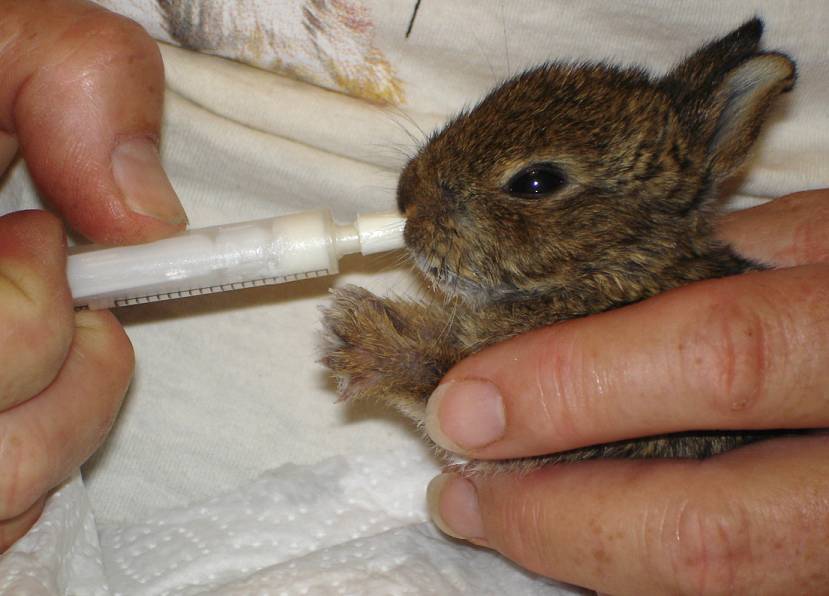 Some are useful for the prevention of ailments. nine0003
Some are useful for the prevention of ailments. nine0003
So, for example, walnut branches remove parasites from the body, linden and willow - work as an anesthetic, birch - as a diuretic. Give them to rabbits infrequently, as needed.
Trees and shrubs whose branches can be used as permanent feeding include: .
Trees whose branches can be given to rabbits occasionally :
- Pear, rowan, oak, chestnut.
- Pine, juniper.
Do not use branches of bird cherry, lilac, elder, rosemary in the diet.
Another nutritious food for rabbits is acorns. You can feed them both green and dry. The norm of acorns per day for an adult is 50 g.
Introduce them into the diet gradually - first in the form of flour, as an additive to the main grain feed, and then as an independent complementary food. Rabbits love to chew on them. nine0003
For more information, read our article on how, when and what to feed rabbits.

Edible salt
Table salt is used not only as a seasoning. Chlorine ions contribute to the production of hydrochloric acid in the composition of gastric juice, and sodium ions are responsible for the transmission of nerve impulses.
Rabbits gnaw on the wooden partitions in the cage due to salt deficiency. This indicates such problems:
- violation of metabolic processes;
- decrease in offspring productivity, increase in the number of miscarriages;
- slow growth of newborn animals;
- diseases of the gastrointestinal tract;
- water-salt imbalance and diseases associated with blood formation.
Edible salt is given together with chalk. For this, mineral briquettes are prepared. The following components are required:
- 500 g feed chalk;
- 500 g red clay flour;
- 300 g ground hardwood charcoal flour; nine0012
- 5 st. l. salt;
- 3 st.
 l. fodder sulfur.
l. fodder sulfur.
Mix ingredients with water until a thick dough is obtained. From it, fashion shapes the size of a matchbox. String them on the wire. Dry first in the shade and then in the sun. Fire it like clay in a kiln.
Place one in each rabbit cage. They themselves will learn to gnaw a briquette in the amount that their body requires.
Acidophilus
Rabbits are not distinguished by good health, the gastrointestinal tract is their weak point. Gastrointestinal stasis is often found in these animals, when the stomach stops working and the individual dies. nine0003
Acidophilus is a complex of beneficial lactobacilli. It helps digest food in the large intestine and protects against harmful bacteria that can lead to bloating, diarrhea, and other problems.
This drug will also help when taking antibiotics, when the entire intestinal microflora is destroyed.
Caecotrophs are the primary feces of the rabbit. It has an oblong shape, often reminiscent of a bunch of grapes due to sticky spools. The color varies from light green to black. The smell is unpleasant, sour. nine0003
The color varies from light green to black. The smell is unpleasant, sour. nine0003
This feces is formed in a special compartment of the caecum, which is found only in lagomorphs. Therefore, do not confuse caecotrophs with ordinary feces.
Usually rabbits eat caecotrophs from the age of 20 days as soon as they leave the body. In this way, they re-absorb vitamins and minerals. Without this, the animals would suffer from beriberi.
If there are too many caecotrophs, the animal does not eat them, then you are overfeeding the rabbit with cereals. Remove grains from the diet for a couple of days, leaving water, branches and hay. nine0003
The second reason may be worms. Get rid of the parasites and everything will be back to normal.
Artificial feeding of rabbits has its positive and negative aspects.
The benefits include:
- Getting used to milk substitutes, rabbits are undemanding to eat.
- Good appetite leads to weight gain and growth of individuals.

- The diet is adjusted to the person and his capabilities.
Disadvantages of artificial feeding:
- Nutritional value, composition of vitamins and minerals in substitutes is much lower than in natural rabbit milk.
- Inability to transfer antibodies, which means weakened immunity of the offspring.
- Difficulty in nipple training.
- Baby rabbit may be injured while feeding.
- The constant presence of a person next to the kids for care and attention.
Baby rabbit care
The earlier the baby rabbits were left without a queen, the more complex care they need. The conditions of detention and the feeding regime require a great responsibility and dedication from a person. nine0003
Lighting and heat
Newborn rabbits require special care, attention should be paid to lighting and heat when rearing babies.
There must be a place in the cage where the sun's rays do not reach. Direct solar radiation is dangerous for animals. Daytime lighting should be dimmed, and it is recommended to turn off the lights at night.
Daytime lighting should be dimmed, and it is recommended to turn off the lights at night.
Keep the rabbits warm. To do this, build a nest from the fluff of adult rabbits or put a heating pad in the cage. The optimum temperature is considered to be when a person’s hand is comfortable, and not hot. nine0003
Hygiene
Cleanliness in the care of rabbits is essential, because without immunity they are more susceptible to germs and bacteria.
Boil utensils and teats before use. Prepare the mixture before feeding, according to the instructions. Store milk in the refrigerator for up to 3 days.
Before feeding, wash your hands with fragrance-free soap and dry with a towel. After feeding, clean the babies from the remnants of food and bowel movements.
Abdominal massage
Bowel and bladder emptying requires special attention, because babies do not know how to cope with it.
Before feeding, the female licks the baby rabbit, pressing on the stomach with her tongue, moving from the navel to the hind legs. Thus, it causes the intestines and bladder to empty.
Thus, it causes the intestines and bladder to empty.
A person who substitutes a mother for rabbits should not forget about this procedure. Otherwise, the bladder will burst.
Before each feeding, massage the baby's belly with a damp soft cloth or piece of cotton. nine0003
This manipulation is completed when the offspring are more than 14 days old.
In healthy rabbits, the belly is elastic and slightly convex. If it is sunken, then this is a sign of gastrointestinal problems.
In the video below, the breeder demonstrates how to massage the belly of a rabbit before feeding:
Caring for orphaned rabbits requires a lot of strength, skills and patience from a person. Only in this way will they survive and grow into beautiful healthy individuals.
Publication author
What to do and how to feed baby rabbits without a female rabbit, artificial feeding of baby rabbits without a mother
Many rabbit breeders face the problem of the female refusing or being unable to feed her offspring. Babies are simply left to fend for themselves. If this happened to you, don't despair. After all, animals can be raised to their feet with the help of artificial nutrition. How to feed rabbits without a rabbit, find out with us.
Contents
- 1 Is it possible?
- 2 Power Rules
- 2.1 cow's milk
- 2.2 Kozie milk
- 2.3 Grass granules 9001 3.3 At 17-30 days of age
- 3.4 When to switch to an adult diet?
- 4.1 Similar items
Is it possible?
Of course, it is quite possible to organize the feeding of rabbits left without a mother by yourself. The organization will take you some time, you will need syringes, nipples, mixtures or milk directly, but the result will please. Often, rabbits fed with milk and milk mixtures grow up even stronger than those that were next to their mother. But why kids remain orphans, you can find out from our previous article. nine0003
Often, rabbits fed with milk and milk mixtures grow up even stronger than those that were next to their mother. But why kids remain orphans, you can find out from our previous article. nine0003
In addition to feeding rabbits by a person, you can use another method - to plant babies with another nursing mother. With the right approach, she will take care of the orphans as if they were her own. But in this case, you should carefully select the female, because not everyone will agree to feed "foreign" children. If you don’t have any other nursing rabbits on the farm, except for the one that left her cubs, do not be alarmed.
Food regulations
As you know, for any newborn babies, including rabbits, feeding with mother's milk is best. There are other options, but only this product is suitable for the smallest rabbits. Next - more about the products that can be used to feed rabbits. nine0003
Cow's milk
The first product that all livestock breeders turn to is cow's milk. Feeding pure cow product is not suitable for rabbits - it is too different from mother's milk. If you intend to feed newborn rabbits with cow's milk, dilute it in equal proportions with regular condensed milk. This increases fat content and nutritional value. From the first days, you need to do 5 feedings, giving the fluffies 1 ml of such mixed milk per dose, and then, as they grow older, gradually increase the portions. nine0003
Feeding pure cow product is not suitable for rabbits - it is too different from mother's milk. If you intend to feed newborn rabbits with cow's milk, dilute it in equal proportions with regular condensed milk. This increases fat content and nutritional value. From the first days, you need to do 5 feedings, giving the fluffies 1 ml of such mixed milk per dose, and then, as they grow older, gradually increase the portions. nine0003
Goat milk
If you do not consider cow's milk as an acceptable option, you can choose goat's milk. It is no less beneficial for little rabbits than that produced by the mother, and it does not need to be mixed with other types of foods. Some farmers give Acidophilus in a mixture with goat's milk, but it is better to check its dosage with a veterinarian. Goat milk is given to rabbits from birth, 2 ml twice a day. From the beginning of the second week of life - 5 ml twice a day. nine0003
Herbal granules
Feeding orphans in the first weeks should be only dairy. You can make a combination of herbal granules with milk only from 3 weeks or from the 1st month of life, if the babies are developing well. Newborn rabbits should not be given such a nutritional supplement, otherwise they will have stagnation in the intestines! The amount of herbal granules after 30-40 days of life is calculated by the amount of weight (about 3% of the total weight of the animal). Each serving must be weighed, as pellets from different manufacturers weigh differently. nine0003
You can make a combination of herbal granules with milk only from 3 weeks or from the 1st month of life, if the babies are developing well. Newborn rabbits should not be given such a nutritional supplement, otherwise they will have stagnation in the intestines! The amount of herbal granules after 30-40 days of life is calculated by the amount of weight (about 3% of the total weight of the animal). Each serving must be weighed, as pellets from different manufacturers weigh differently. nine0003
Artificial mixtures
Formula-fed formula-fed rabbits are a good option as they are nutritious and digestible. You need to make such a milk "porridge" by diluting the mixture more concentrated than indicated in the instructions. Feeding mixtures in the first week of life of rabbits should be built according to the schedule.
If the babies are gaining weight well, well-fed, they do not have indigestion, it will be noticeable immediately. From the 1st day of life to the 7th, the mixture is given 5 ml 3 r / day, from 7 to 25 days - twice a day, 20 ml each, increasing by the end of the month each meal to 60 ml. nine0003
nine0003
Animal breeders with experience advise from the age of 17 days to leave rabbits in cages with various special feeds and finely chopped vegetables, because it is at this age that their teeth change. The replacement of teeth stops at the age of 45 days, the animals finally stop eating milk and milk formulas. Also, rabbits are weaned from their mother if they are suckling.
Important! Rabbits have a well-developed instinct to imitate their relatives. From 14 days of life to 30, you can offer them finely grated carrots, a small amount of dry rabbit food, greens. nine0003
Feeding orphans at different ages
We figured out that small rabbits may even need to be fed milk, as well as powdered milk mixtures similar to mother's milk. Herbal granules up to a certain age must be said "no". How exactly to feed your newborn pets from the moment they are born? And when should you switch to a more adult diet so that the transition is natural? Let's find out more about this.
Newborns
A newly born or day old rabbit is fed with milk or formula. On the first day, we give food literally drop by drop, making sure that the rabbit's tummy does not overflow. Little fluffies still do not have an understanding of how much liquid they need to suck out, they will drink how much you give. nine0003
From the first to the fifth day of life, we feed 4-5 times a day, 1 ml of milk or formula. By the 5-6th day of life, if the animal gains weight well, defecates regularly and grows, its weight should exactly double. The weight of a newborn rabbit on average ranges from 40 to 80 grams.
Nutrient liquids should not be heated above 37 degrees. It is better to drink milk through a pipette or through a syringe without a needle. All manipulations must be carried out with clean hands, done in clean dishes. nine0003
5-14 days old
If you are successful in feeding milk to newborn rabbits, by 5 days of age, the babies will double their birth weight. From five days, pets are watered not 5, but 3 times a day, giving 25-30 grams of mixture or milk. This continues for about 14 days. By the end of the second week, the rabbits are already noticeably gaining weight, and they can be transferred to a two-time diet. The weight of such an animal during this period reaches 260 grams.
From five days, pets are watered not 5, but 3 times a day, giving 25-30 grams of mixture or milk. This continues for about 14 days. By the end of the second week, the rabbits are already noticeably gaining weight, and they can be transferred to a two-time diet. The weight of such an animal during this period reaches 260 grams.
nine0049 17-30 days old
Feeding rabbits at the age of one month is much easier than newborns. By the month the animal gets stronger, weighs about 500 grams, and sometimes more. From 17 days of age to 30 days from birth, most of the milk teeth are replaced by molars in pets. If the animal is healthy, it is actively interested in new food: vegetables, grass, it can eat hay, dry oatmeal, a mash of milk porridge. The diet at the age of one month is two times a day, many breeders exclude milk and mixtures after a 30-day milestone. nine0003
When to switch to an adult diet?
Rabbits can and should be introduced to an adult diet from 30-45 days, similar to the period when they are weaned from their mother.






